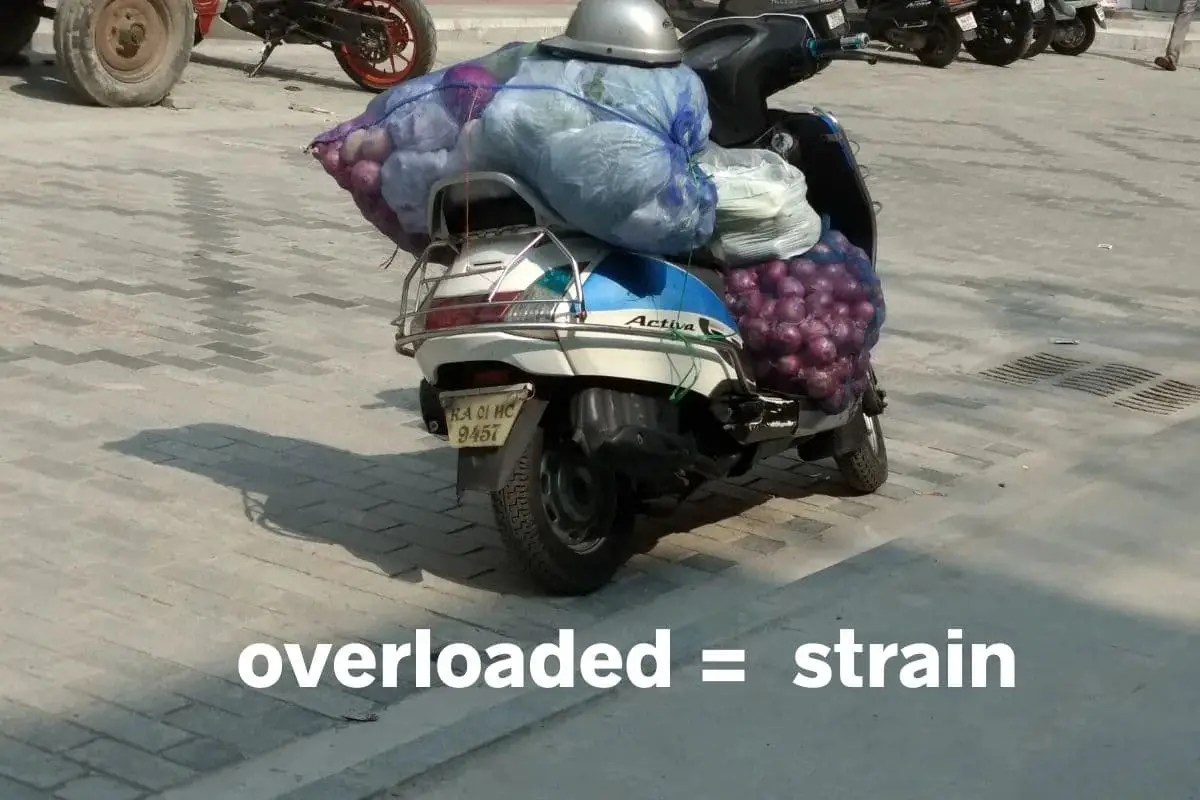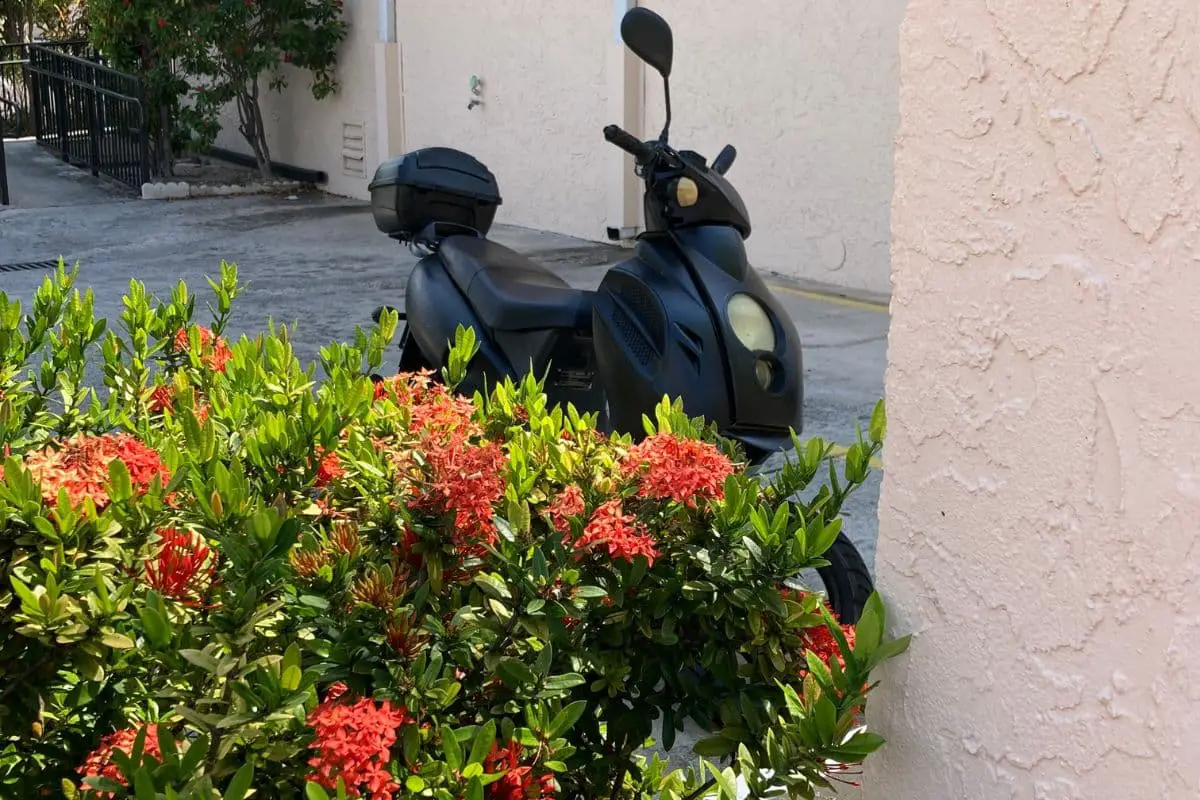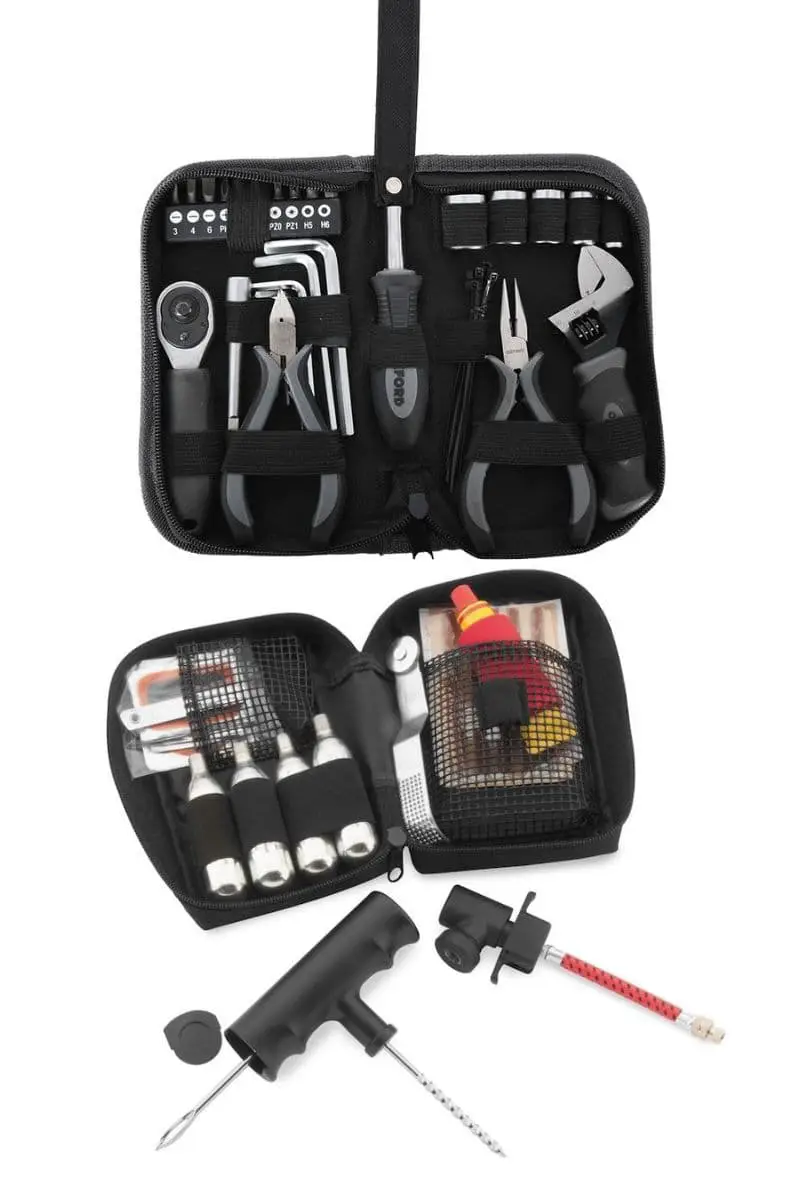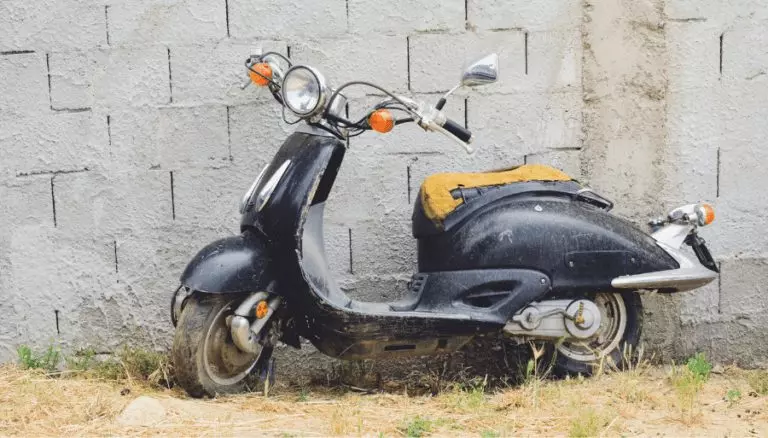I have been looking at getting a different engine-size scooter, and I’d like to get my hands on a used scooter. This led me to look into what exactly is considered high mileage to help me get the most bang for my buck.
In general, scooters or mopeds with over 20,000-30,000 miles are considered high mileage. There are stories of those getting 50,000-100,000 before a rebuild is required. The range is highly dependent on how the scooter is used and cared for.
You’re likely here, though, because you’d like to know specifically what to look for in regards to mileage to buy a used scooter. Just like all things mechanical, there is a big range of how long a scooter will last, and it turns out that maintenance and how it was used will influence the lifespan of your scooter.
How Many Miles Are Scooters Supposed to Last?
There is no exact number that will tell you whether or not a moped is entirely dead. It depends on how it has been used and the service history.
While cars can last 200,000 miles, you aren’t likely to see this reached on a scooter. That said, 50,000 miles isn’t necessarily crazy on the average scooter.
The key here is that the average lifespan is more than just miles because many scooters are not driven daily like their car counterparts.
Does Mileage Always Matter?
In terms of mileage, it actually doesn’t matter. Maintenance does.
On the other hand, most manufacturers have recommended thresholds for periodic maintenance that depends on mileage and time between occurrences (like months between oil changes).
In this case, tracking actual mileage information makes sense. To make sure the scooter is taken care of, mileage plays a part. It just doesn’t necessarily matter in terms of what makes a scooter high mileage.
Why Mileage Doesn’t Matter
Scooters tend to be ridden in a few different ways. You have the hard-core commuter looking to ride everywhere – work, errands, groceries, literally everywhere rain or shine!
You then have the recreational rider that rides only when the weather is nice & on the weekends.
I’ve personally been on both sides of this spectrum in the couple of years that I’ve been riding, so I get it.
Now let’s say the recreational rider has their scooter in the garage unridden for months. They didn’t prep it for that long-term storage, and it doesn’t start when spring arrives. Eh. Nevermind. They’ll deal with that nuisance later.
Somehow those few months turn into a few years. This happens quite often in the scooter world. While that scooter has low mileage, motors generally don’t like to sit with the same fluids hanging out in them for long periods of time unused.
Now let’s look at that hard-core commuter that uses it daily. Has the oil been changed faithfully every 1,500 miles? What about the transmission fluid?
Scooters and mopeds don’t like to be run with dirty fluids either.
The moral of the story here is really that you need to gauge how the scooter was used and cared for leading up to now.
Does Brand Matter in the High Mileage Conversation?
Mostly no. There are some scooters that are just not known for quality, but those are the brands that are not serviced through a dealer network.
Some riders would say that scooters like the Vespa 300 series can reach as high as 50,000 miles before needing major service. Others would say that your scooter can go beyond 100,000 + miles like the Honda Silverwing owner talked about on ADVRider.com.
While the brand doesn’t matter, there does seem to be evidence that the type of motorcycle here does matter. Well, in terms of what type of scooter it is. Maxi-scooters seem to have more reports of higher mileage limits, but I imagine they are ridden more than the 10-year-old 50cc scooter you just found for a sweet deal that only has 1,000 miles on it!

Has the Scooter Had a Lot of Heavy Loads? or Ridden Hard?
Motors don’t love to be under heavy strain often. There are a couple of ways a scooter in particular would be ridden with more pressure – heavy loads and riding at the motor’s limit for long periods.
A scooter that has already gone 50,000 miles with modest, normal loads is likely to run 50,000 miles more than one running with heavy cargo on rough roads.
Ok, so most scooterists aren’t loading up a mattress or on an adventure, or off-road trails either, but they can be aggressive riders pushing the scooter to its limit when accelerating at lights and the top end of its speed range when cruising around.
This constant strain does impact how long the motor will last before an engine rebuild is required.
Riding a 50cc moped at 40 miles per hour day in & day out could take its toll over the same kind of riding but on a 150cc scooter.
A 150cc engine will like the 30-45 mph roads even smoother than a moped running all-out at the same speeds.
This means that a 150cc engine is likely to last longer. It just isn’t having to work as hard.

How Can You Tell if a Scooter is in Good Condition?
If mileage isn’t going to tell you if a scooter is on its last leg, what exactly do you need to look for?
Ask questions to determine how it was used. At the bottom of this article, we talk about how you can use and store your scooter to keep it lasting longer, and finding out how the scooter was used and stored will help you here.
Who has owned and been riding it?
Has it had 1 owner per year, or are we talking about 1 owner for the last 10 years?
If it is a 2008 with 1,800 miles, you’ll want to know how it was stored. Did they drain fluids each season before storing it? Or was it just sitting outside where they left it in August 3 years ago? In general, seals dry out, carburetors can get clogged, fuel goes bad, gas tanks can rust… the list can go on & on & cause problems for keeping the scooter going down the road as it continues to age.
Service records would be fantastic, but I know that having full records is not common.
I do not want to be completely ageist here, but is the seller a younger person that has been using it to ride to and from campus & without any tools & 2 hours away from a dealer? This screams poorly maintained, and possibly a scooter that may have been ridden harder.
How much was the scooter new? Again, this isn’t a hard & fast rule, but a more expensive scooter is more likely to have been purchased by someone with more disposable income & likely someone who could afford maintenance and repairs more reliably. This is a broad generalization, but just something to consider (& definitely not 100% true).
It is possible they are also more seasoned riders that didn’t abuse it the same way a newer rider might. This is a guideline & NOT A RULE.
➡️➡️ Questions to Ask When Buying a Used Scooter ⬅️⬅️
Was it stored in a garage or outdoors? If outdoors, was it covered reliably?

How Should You Use and Store Your Scooter?
To make your moped last longer, you should use and store it with care.
How?
Here are some tips:
1. Don’t rev the engine more than necessary.
If you’re twisting the throttle to the limit every time you leave a light, you’re straining the motor every time, too.
Use your scooter & have some fun (safely). Just not EVERY time. Too much revving increases the pressure not only in the motor engine but also in the transmission.
2. Give your scooter a break on long journeys.
Riding your motor scooter long distances is fine. However, it is a good idea to give it (& yourself) a break from time to time. Most scooters are air or liquid-cooled, but a stop every now & again isn’t a bad idea.
A good rule of thumb is to stop every 2 hours…. for you and your scooter.
3. Don’t overload it.
Scooters do have weight limitations depending on the size of it. Be careful to not exceed the weight (check the manual), but if you are carrying a heavier load than normal, you’ll want to take it easy, as well.
This is similar to over-revving the engine as it adds a strain to the scooter motor.
Even the rider’s weight can play into this. If your weight puts your scooter at the higher end of what is recommended, you may add strain to the motor, as well. I know! It sounds nuts!
4. Keep the tire pressure at the optimum pressure level.
A moped with low tire pressure basically rides like it is a tiny bit heavier. It consumes more fuel as and causes the engine to work a bit more through this. Just keep the PSI (indicated on the tire) in the right range.
5. Keep your scooter out of direct sunlight daily.
Too much exposure to sunlight will cause the clear dashboard to get cloudy, turn more yellow, or even crack.
Extreme heat from being in the sun can also change the viscosity of the fluids in the scooter, as well.
To protect the dashboard and the motor engine, park under the shade whenever possible. When there’s no option to store it in a garage or something, a motorcycle cover can help with the cosmetic risk.
6. Regular maintenance is the most important thing you can do!
Whether you have or hope to have your own high-mileage scooter down the road, you’re going to want to stay on top of maintenance. Each scooter is different, so you need to refer to the manual to get this right. Filters (like an air filter or oil filter, if equipped) need to be replaced.
If you see evidence of oil leaks or any other fluid leak, handle that quickly.

Tools You’ll Want to Carry
Related Questions
Here are a few answers to specific questions about how to prolong a scooter.
Can a scooter last for ten years?
A scooter can certainly last 10 years, but it will really depend on how the scooter is used, stored, and maintained.
If you average 2,000 miles a year for that 10 years, your scooter would just be at that threshold of possibly being a high mileage scooter. The key here will be on the maintenance whether you are looking at a 50cc scooter or a 500cc scooter.
What brand of scooter is the most durable?
Although the lifespan of your scooter depends on how you use & care for it, you can never prolong a defective brand.
➡️➡️ RELIABLE Motor Scooter Brands ⬅️⬅️
For example, I’d love to buy a Vespa, but despite living around Houston, I don’t have a Vespa dealer nearby for any warranty or break-in maintenance. However, I do have a dealer of Lance, Genuine Scooters, Kymco, Yamaha, Suzuki, and Honda close enough.
Can wheels be changed to a larger size?
The size of your scooter motor is planned around the size of the tires already on it.
There are folks that do elaborate mods, but if you are looking at a scooter with tires that are not the factory size, that motor is likely impacted & working harder than it was designed.
Final words
A scooter’s mileage is not an accurate measurement of its lifespan. However, it is essential in determining your periodic maintenance schedule.
So the next time you look at the gauge, think of what to replace & care for – not when to junk your scooter.







